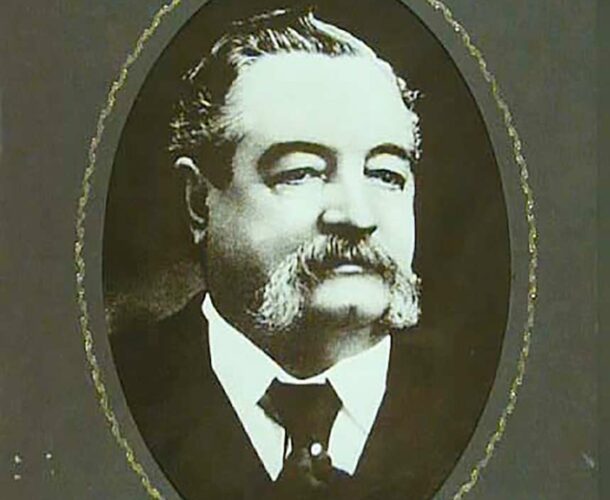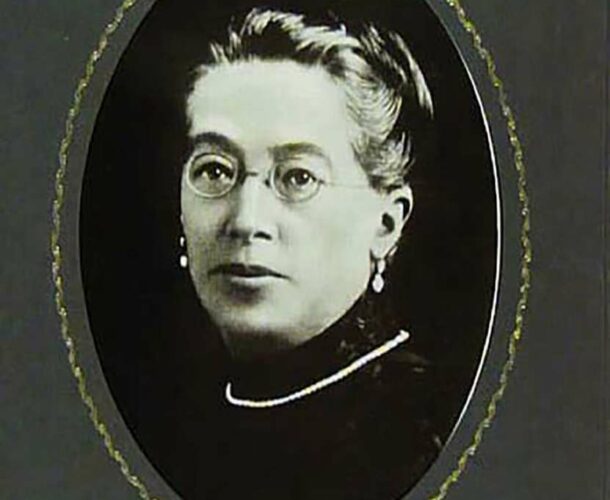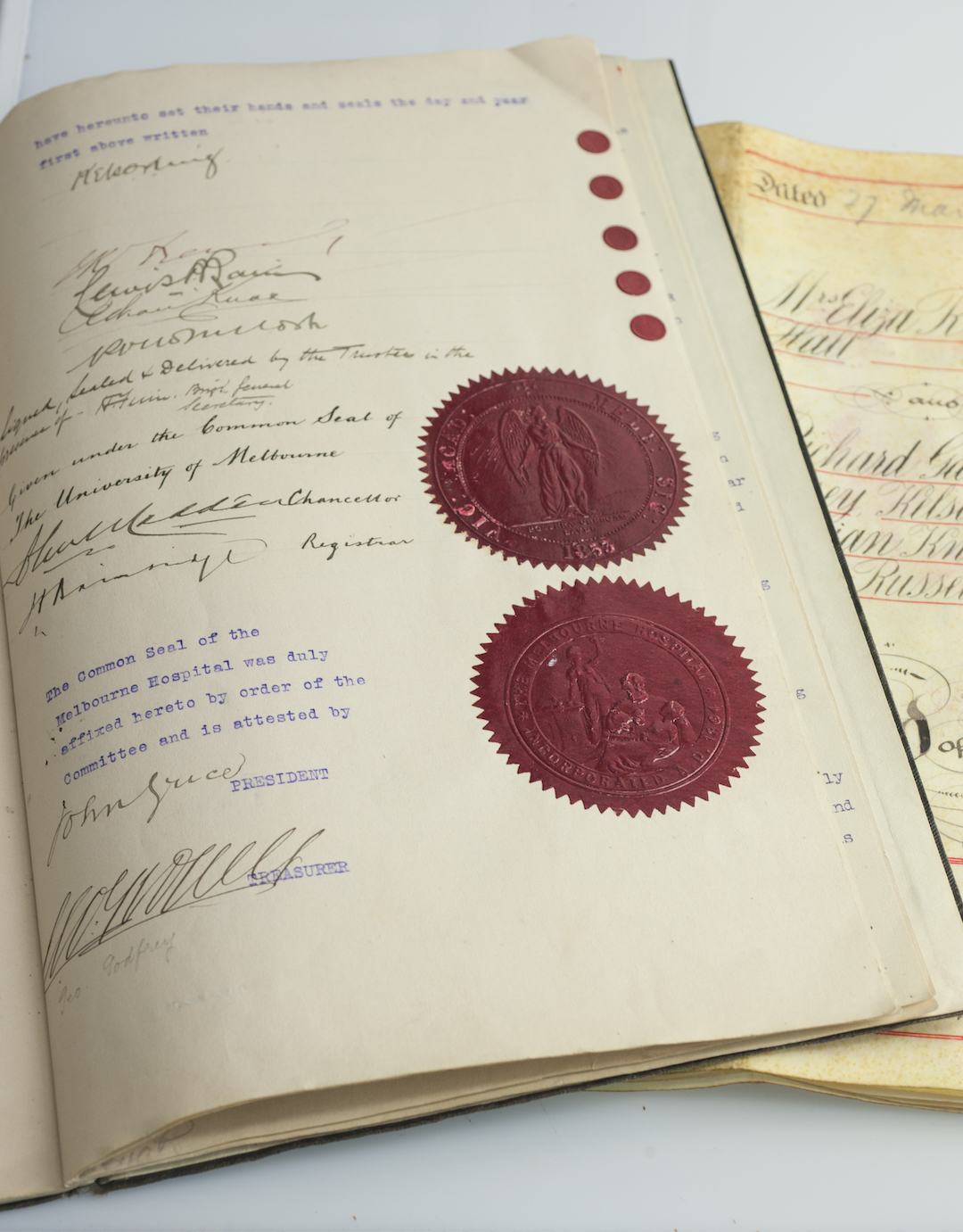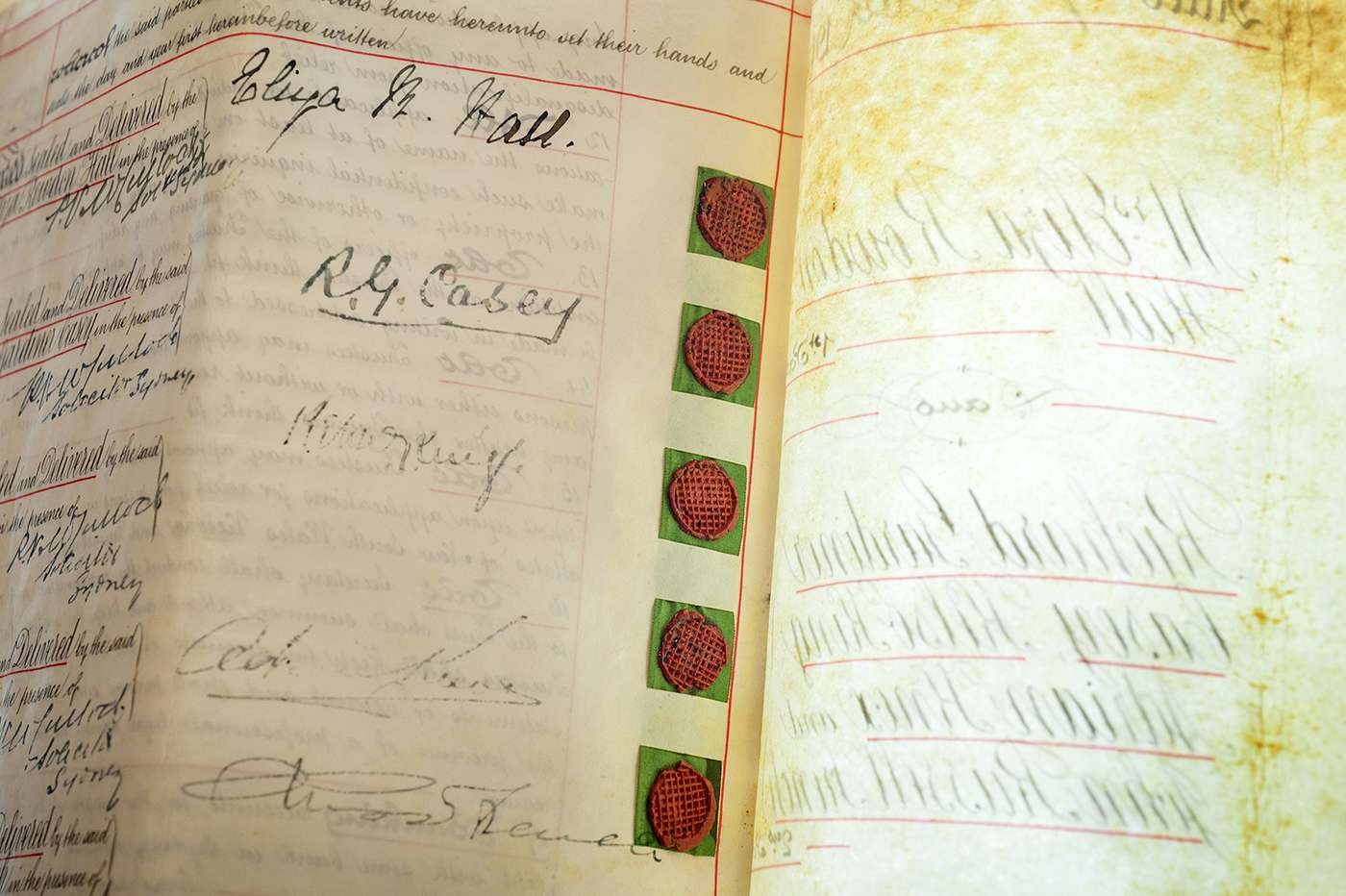Beginnings of the Walter and Eliza Hall legacy
Walter Hall began his life in Australia seeking his fortune in the Victorian goldfields. Despite an inauspicious start he becomes a very successful and wealthy businessman. In addition to pastoral holdings and mining interests, he invests in Cobb & Co.
Walter and Eliza Rowdon Kirk marry and are active philanthropists in their community.
Seizing opportunities to make the Hall fortune
In the 1850s industrialisation was causing seismic change across Britain, shaking up social and economic norms. Walter Hall Snr was a glover in Herefordshire, a family man and craftsman who may have felt his skills would become redundant.
In her 2012 written account of the history of the Walter and Eliza Hall Trust, “A Remarkable Gift”,1 historian Dr Kay Fraser ponders whether Britain’s industrial revolution might have been the impetus for the struggling Hall family to join the wave of immigrants taking their chances on a new life in a new land, making the epic journey to Australia.
The first of the family to arrive in Sydney was Walter Snr’s son, Walter Russell Hall, 21, who landed in February 1852 with little more “than a small sum of money in his pocket and grand dreams of what he might find in the goldfields of colonial Victoria”, Fraser recounts.
Walter quickly seized the opportunities springing up around the gold rush, first starting a store and then becoming an agent of the then new Cobb & Co horse-drawn coach company. By 1857 he was a partner in this thriving business, managing its operations across New South Wales and later into Queensland, and developing pastoral interests at the same time.
Marriage and wealth, a fine pair
By the time Walter Hall Jnr married Eliza Rowdon Kirk on 15 April 1874 in Melbourne, he was a wealthy man. Eliza was the eldest daughter of another family of immigrants who had capitalised handsomely on their new opportunities. Her father, a Yorkshire-born butcher, grew his trade into a prosperous one on the appetites of burgeoning Victoria, acquiring farming interests to feed the business. He served for a term in the Victorian Parliament and built his family a gracious Gothic-revival home, ‘Avoca’, on the banks of the Yarra (it still stands today).
In 1882 Walter used his wealth to buy into a syndicate that included his younger brother TS Hall, to acquire what would become at that time Australia’s richest mine, the Mount Morgan mine near Rockhampton in Queensland.
As one of the first shareholders of the Mount Morgan Gold Mining Company, which mined both gold and copper, Walter became immensely rich. He and Eliza acquired property at Potts Point, Sydney, with gardens sweeping down to the harbour, and built themselves a fine home. Eliza, who had a taste for beautiful things, took pleasure in decorating their home.
An article in The Sydney Morning Herald reported that Eliza loved to drive – in her carriage in the morning, and her motor car in the afternoon: “She is very fond of flowers, and her favourite drive is around Centennial Park, where all the gardeners know her”.
Eliza was a gentlewoman, historian Fraser concluded, but not soft. She and Walter operated as a team. She accompanied her husband on many long, uncomfortable journeys to Melbourne and to the Queensland mine. Her sister-in-law’s diaries “give the impression that Eliza is a woman to be obeyed, certainly not to be ignored”.
Although few personal papers of Walter and Eliza Hall survive – and Fraser wonders whether they were perhaps intentionally destroyed to preserve their privacy into the future – the picture she assembles of Walter in the context of his family is as a caring, considerate and generous man.
“Eliza and Walter Hall made a fine pair,” Fraser observes. “She was the gentle lady with simple but refined tastes. He was the astute businessman, albeit with time to attend to family and friends.” The couple had no children, but were apparently attentive and generous to children in their wider family, and Eliza donated to children’s causes.
Acts of philanthropy
In Walter and Eliza Hall’s era in Australia, acts of philanthropy by the wealthy were still relatively rare, though this was slowly changing. Kay Fraser’s investigation unearthed suggestions that the couple likely made numerous small, regular donations to a range of causes but did so “quietly and unostentiously”, as one newspaper observed after Walter’s death in 1911, aged 80.
Eliza was 64 when she was widowed. She inherited most of his fortune, although by then the mine yields were beginning to decline. Within a year the Walter and Eliza Hall Trust had been established, and within four and a half years she would herself succumb to cancer.
There is some dispute and mystery around where the initiative for the trust came from: Eliza, or Walter in his dying days, or Walter’s friend, business associate and executor, Richard Gardiner Casey? But Fraser quotes the accounts of another intimate friend of the Halls, Kelso King, giving credit to Eliza. “The idea of founding the Benefaction originated with Mrs Hall,” he said in 1933. She was “actuated by the desire to do something noble for the country in which her husband had met with a substantial reward for his labour”.
There’s a hint in King’s recollections that she was reluctant to include her own name in the memorial, but was ultimately persuaded to link her name with her husband’s.
The beginning
Among the first and most substantial endowments of the £1 million pound Walter and Eliza Hall Trust was the endowment to establish the Walter and Eliza Hall Institute for Research and Pathology in Medicine.






